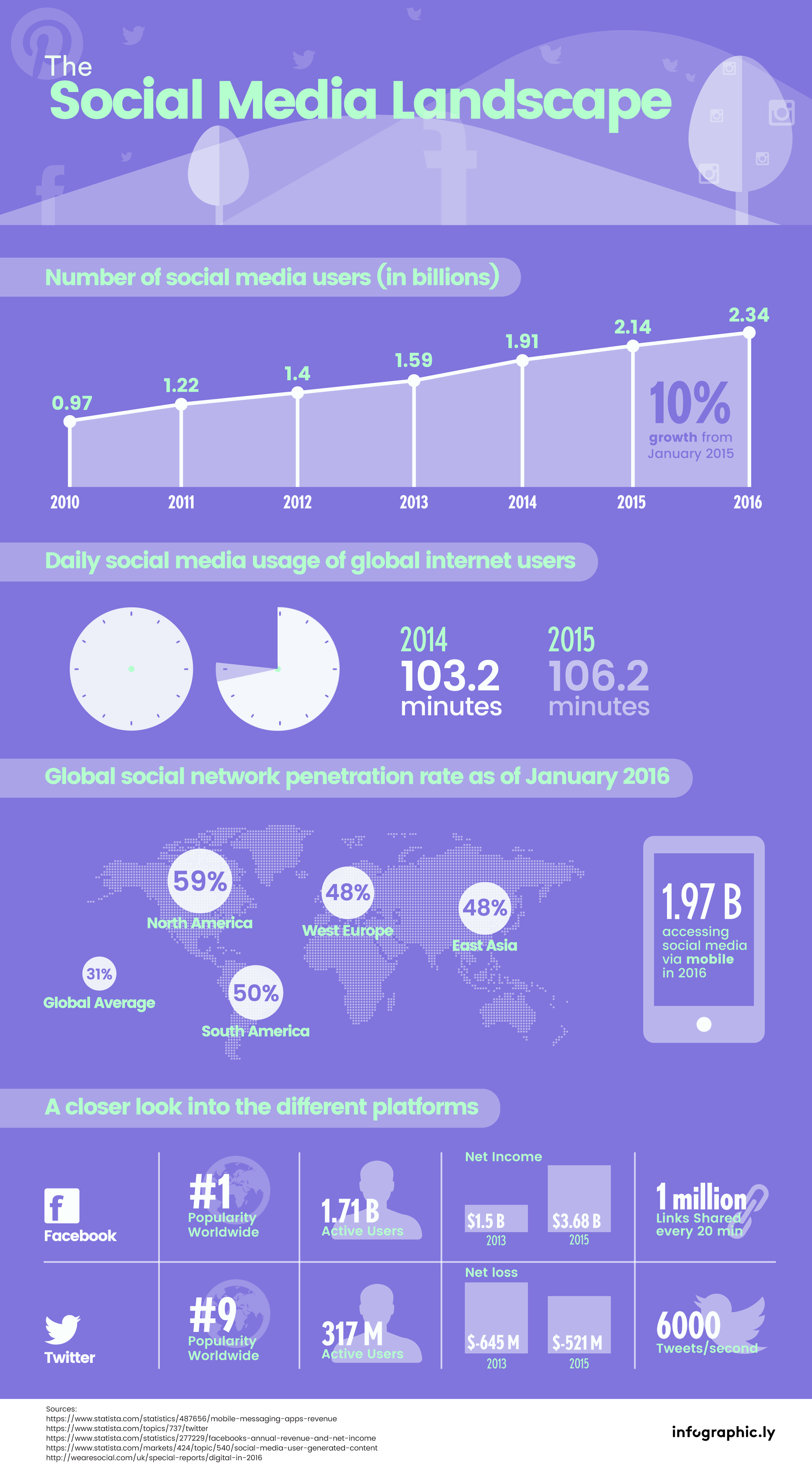[INFOGRAPHIC] The Social Media Landscape
The figures we have collected for this infographic show how prevalent social media is in our daily lives: from computer-mediated technologies to a soaring digital industry. Indeed, while in 2010, the number of social media users was around 970M, today that has more than doubled, encompassing 2.34Bn users worldwide. While that number grows, the average time spent on social media has also increased to reach a total of 106.2 minutes per day. In other words, that represents at least 11% of person’s day.
Mobile phones and smartphones are major factors that have contributed to the adoption of social media platforms remotely, as they represented a new way for people to communicate with each other. New applications specially fitted for the screen, an easy user experience, push notifications have all increase the usability of the platforms through the now equipped devices. Today, the number of people accessing social media through mobile rises up to 1.97Bn.
It comes as no news to anyone that Facebook is today’s most used social media platform. With 1.71Bn users worldwide, Facebook boasts most popularity amongst other channels, its net income has risen from $1.5Bn to $3.68Bn in a matter of 2 years. One million links are shared every 20 minutes. Another major social media channel is Twitter, while it is not as popular as Facebook (#9) it is still important as it has for the first time engaged celebrities, politicians and other important figures to engage in conversation with their body of followers.
The use for social media had first started by a simple value-proposition/model: connect people. Nowadays it has morphed into a platform that nearly does everything: messaging, calling, sharing files etc… but most importantly it has built an ecosystem for all companies, brands and industries to share their content with their users; from telling a story, to engaging their audience, to informing their customers and prospective customers. Social Media platforms have first and foremost been able to create their identity and have been shaping their customers’ perspective and commercial journeys.

